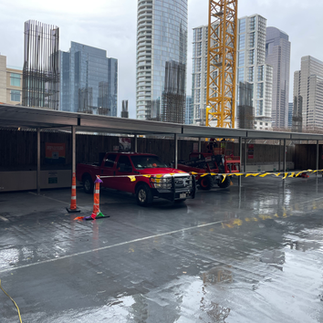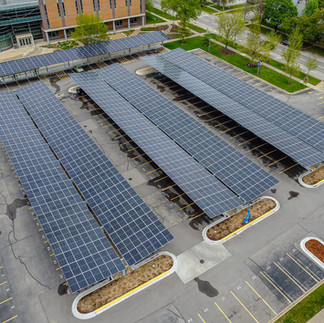Commercial Canopy Construction: What Developers Need to Know
- Anthony Marquez
- May 17
- 2 min read
When it comes to commercial construction, steel canopies are more than just an afterthought — they’re a key component of property functionality, safety, and presentation. Whether you're building for a retail center, multi-family housing development, or a municipal facility, understanding the essentials of commercial canopy construction can help you make better decisions and add long-term value to your project.
1. Structural Engineering Matters
Not all canopies are created equal. Commercial canopies — especially those used for parking structures, pedestrian walkways, and covered loading areas — need to be engineered to meet local building codes and withstand regional weather conditions like wind, snow, or UV exposure. Developers should work with experienced contractors who specialize in steel canopy fabrication and understand municipal and state compliance requirements.
2. Steel Is the Preferred Material
Steel is the gold standard for commercial canopies. It’s durable, low maintenance, and long-lasting. Unlike aluminum or wood, steel can handle heavy use, harsh climates, and years of wear without compromising integrity. Powder coating or galvanized finishes also provide extra protection and design flexibility, allowing you to match the canopy to your property’s aesthetic.
3. Customization Increases Value
Every site is different, which means custom canopy solutions often outperform cookie-cutter options. From dimensions and layout to color, column placement, and trim details — customizing your commercial canopy allows you to meet both functional requirements and design intent. This is particularly important for properties where brand perception and curb appeal matter.
4. Consider Energy-Saving Options
Solar-integrated canopies are gaining popularity in commercial developments. These dual-purpose structures provide shade while generating clean energy — a smart way to reduce operational costs and support sustainability goals. If you’re planning long-term infrastructure investments, solar canopy construction could future-proof your property while unlocking tax benefits or energy credits.
5. Choose the Right Canopy Partner
Finding a canopy construction partner with experience in commercial and municipal projects is crucial. Look for teams that offer:
In-house fabrication
Full permitting support
Site-specific engineering
Turnkey project management
Proven case studies or municipal approvals
Working with a trusted contractor reduces delays, prevents compliance issues, and ensures the structure performs as expected.
6. Applications Across Sectors
Steel canopies serve a wide variety of commercial applications, including:
Apartment complexes and parking structures
Office and medical building entrances
Retail loading and unloading zones
Bus stops, school drop-off areas, and public parks
Government and municipal lots
Each of these settings benefits from canopies that provide both protection and long-term visual appeal.
Final Thoughts
Commercial canopy construction isn’t just about shade — it’s about delivering reliable shelter, smart design, and long-term property value. Developers who plan ahead and work with experienced canopy fabricators are better positioned to maximize return on investment and reduce maintenance headaches down the road.
If you're considering adding a canopy structure to your next development, choose a partner who understands the structural, aesthetic, and regulatory demands of commercial projects.
















Comments